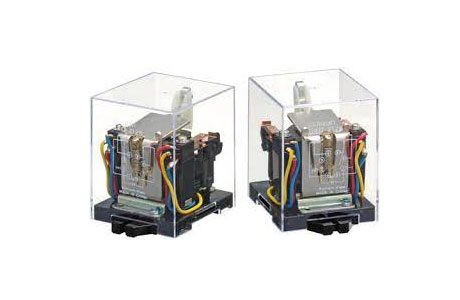What Is Spst Relay
Key Takeaway
A Single-Pole Single-Throw (SPST) relay is a type of relay with one input and one output terminal. It functions like a simple on-off switch. When the relay is energized, it connects the circuit, allowing current to flow. When de-energized, the circuit is open, stopping the current flow. SPST relays are commonly used in basic applications where a straightforward switching action is needed, such as turning lights on or off or controlling small motors. They are valued for their simplicity and reliability in controlling single-circuit operations.
Definition and Functionality of SPST Relays
A Single Pole Single Throw (SPST) relay is a type of electromechanical switch used to control a circuit with a single input and a single output. When the relay is activated, it closes the circuit, allowing current to flow. Conversely, when deactivated, it opens the circuit, stopping the current flow. This straightforward on-off control makes SPST relays highly reliable and easy to use. They are commonly used in simple applications where only basic control is needed, such as turning on lights, motors, or other devices.

Common Uses of Single Pole Single Throw (SPST) Relays
SPST relays are incredibly versatile and are utilized across various industries due to their simplicity and reliability. In automotive systems, SPST relays are used to control essential functions like headlights, cooling fans, and fuel pumps. These relays allow low-power control circuits to manage high-power devices efficiently, ensuring the vehicle’s systems operate smoothly.
In home automation, SPST relays manage lighting systems, security systems, and other household appliances. They provide a straightforward way to automate home functions, enhancing convenience and energy efficiency.
In industrial settings, SPST relays are critical for controlling machinery, starting and stopping motors, and triggering alarms. Their robust design makes them suitable for demanding environments, ensuring reliable operation.
Additionally, SPST relays are popular in hobbyist and DIY electronics projects. They offer an easy method to control different components, making them ideal for prototyping and experimenting with various circuits. Whether used in professional applications or personal projects, SPST relays provide an essential switching solution that meets the needs of various electrical and electronic systems.
Wiring and Installation Tips for SPST Relays
Proper wiring and installation of SPST relays are essential for their effective operation. For a secure and organized setup, particularly in industrial environments, using a din rail mounted 24vdc relay ensures that relays are easily accessible and maintainable. Begin by identifying the relay’s input (coil) and output (contacts) terminals. Connect the input terminals to the control signal source, ensuring the polarity is correct if the relay is polarized. The output terminals should be connected to the device you intend to control.
Ensure the relay is rated appropriately for the voltage and current of your application. Using a relay with an insufficient rating can lead to overheating and failure. It’s important to use suitable wire gauges to handle the current load and to secure all connections tightly to prevent loose wiring, which can cause intermittent operation or damage.
Mount the relay in a location that is dry and free from dust to enhance its longevity. Environments with high moisture or dust levels can degrade the relay’s performance over time. Following the manufacturer’s installation guidelines is crucial for ensuring optimal performance. Regular inspections and maintenance can also help in identifying any potential issues early and keeping the relay in good working condition.
How to Choose and Maintain SPST Relays
Choosing the right SPST relay involves matching its specifications to the application’s voltage and current requirements. Ensure the relay can handle the load without risk of overloading. Also, consider the operating environment; some relays are built for harsh conditions, while others are suited for standard settings.
Regular maintenance is essential for reliable performance. Inspect relays periodically for signs of wear or damage, such as corrosion on the contacts or burn marks. Cleaning the contacts can prevent buildup that might affect functionality. Replace any worn-out relays promptly to maintain system reliability and avoid unexpected failures. Adhering to these practices ensures long-term efficiency and durability of SPST relays in any application.
Potential Problems and Solutions in SPST Relay Operations
SPST relays can encounter several common issues, such as contact pitting, coil failure, and sticking contacts. Contact pitting happens due to arcing when the relay opens or closes. Using relays with arc suppression capabilities can mitigate this problem. Coil failure might result from voltage spikes or overheating, so it’s crucial to use voltage protection devices and ensure proper ventilation. Sticking contacts, caused by dirt or mechanical wear, can be prevented through regular cleaning and inspection. Addressing these problems with preventive maintenance can significantly extend the lifespan of SPST relays and ensure reliable operation in various applications.
Conclusion
SPST relays are essential components in many electrical systems, offering straightforward and reliable control for various applications. Their simplicity makes them easy to install, use, and maintain, making them a go-to solution for both simple and complex tasks. Whether in automotive, industrial, or home automation systems, SPST relays provide efficient and dependable switching capabilities. By understanding their functionality, proper installation methods, and maintenance requirements, engineers and hobbyists alike can effectively utilize SPST relays to enhance their projects and systems.
